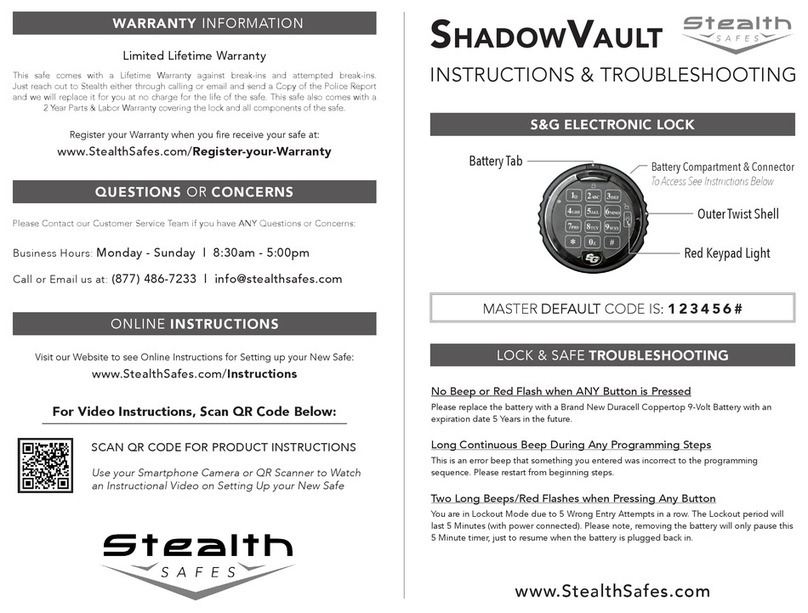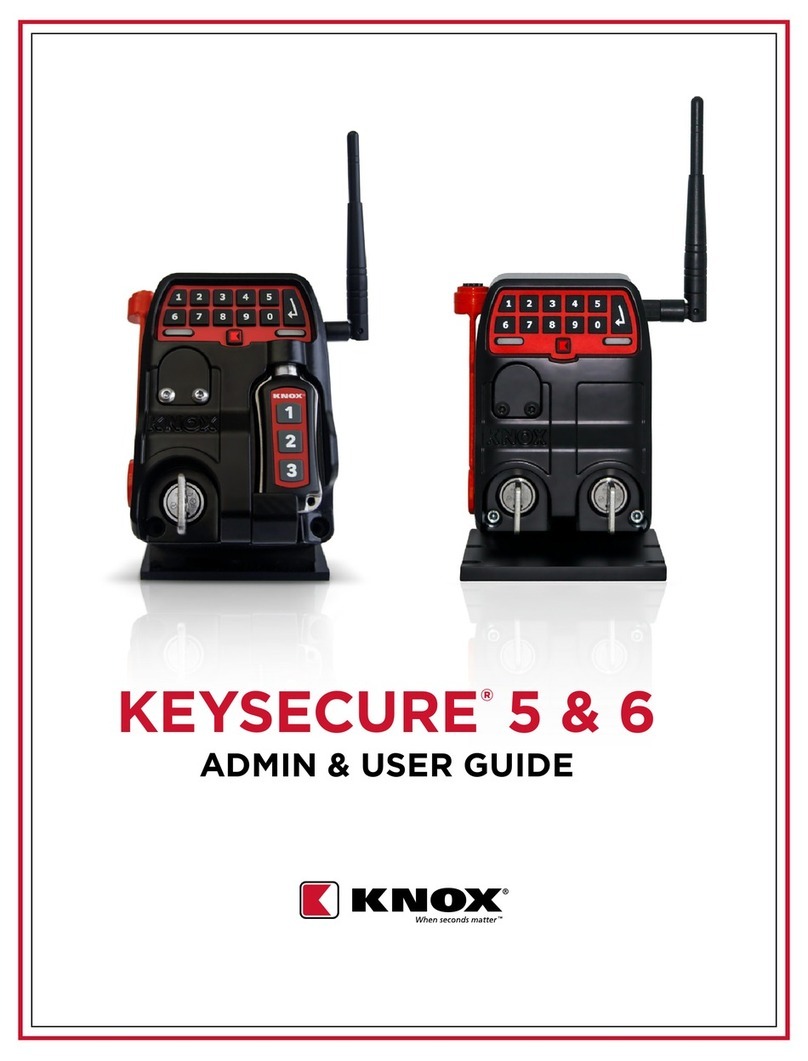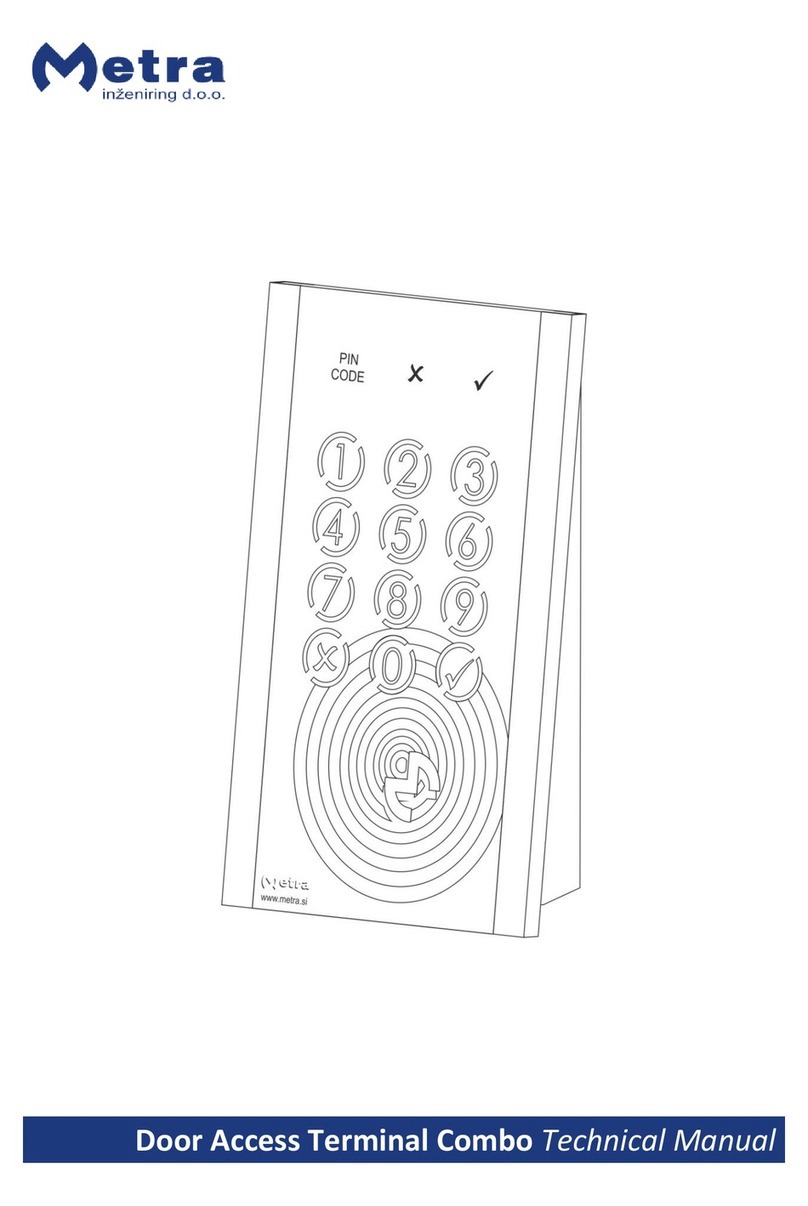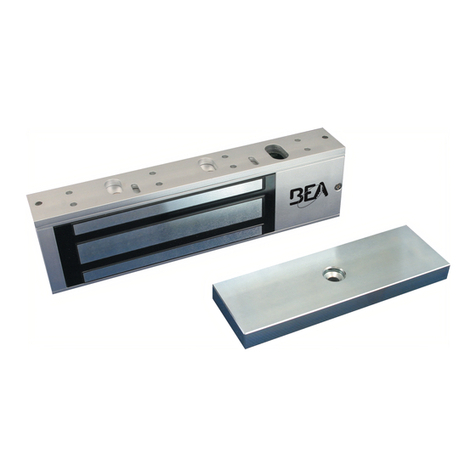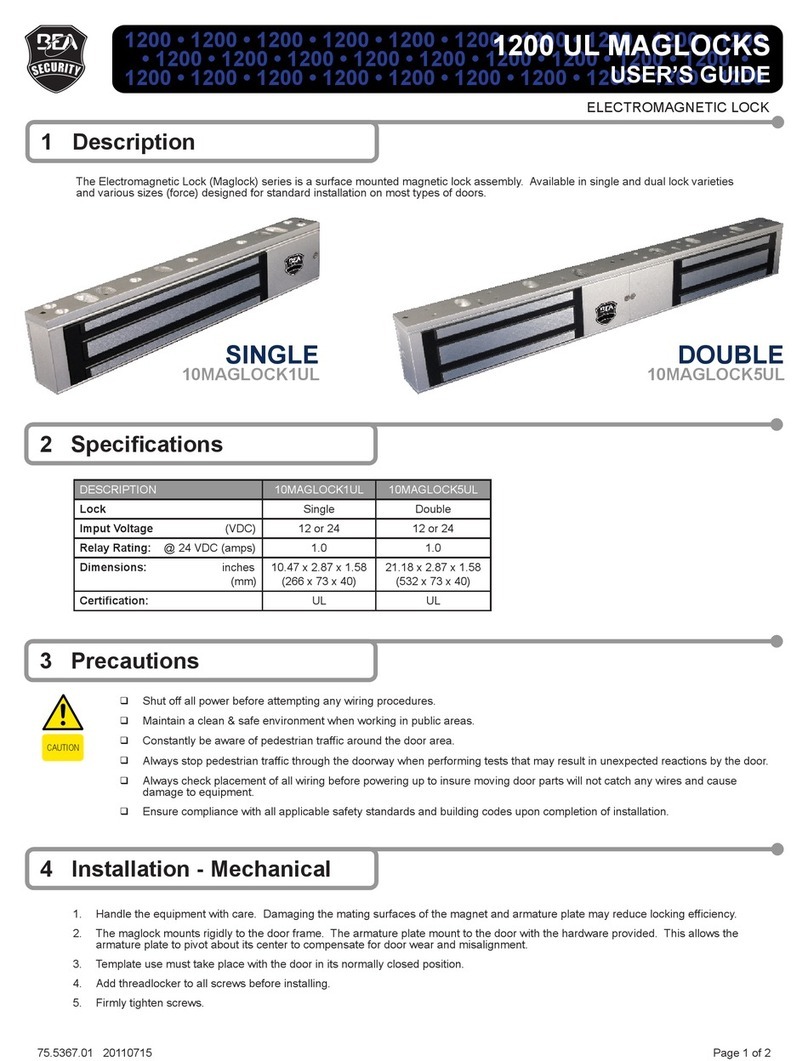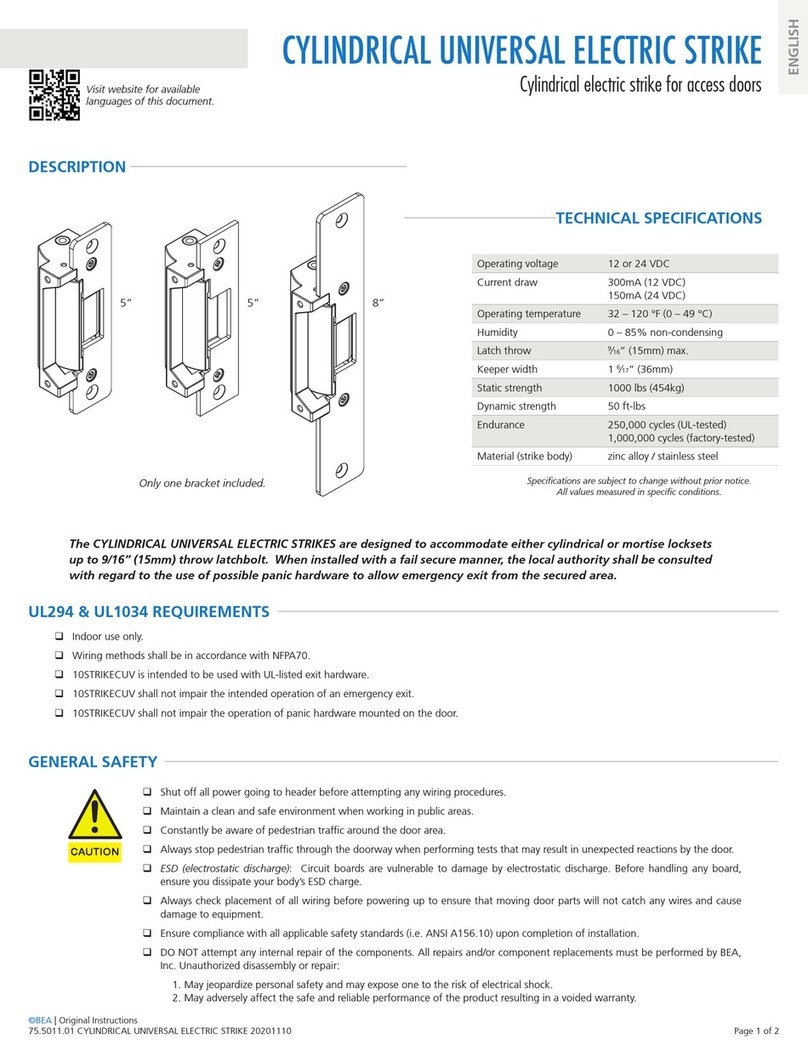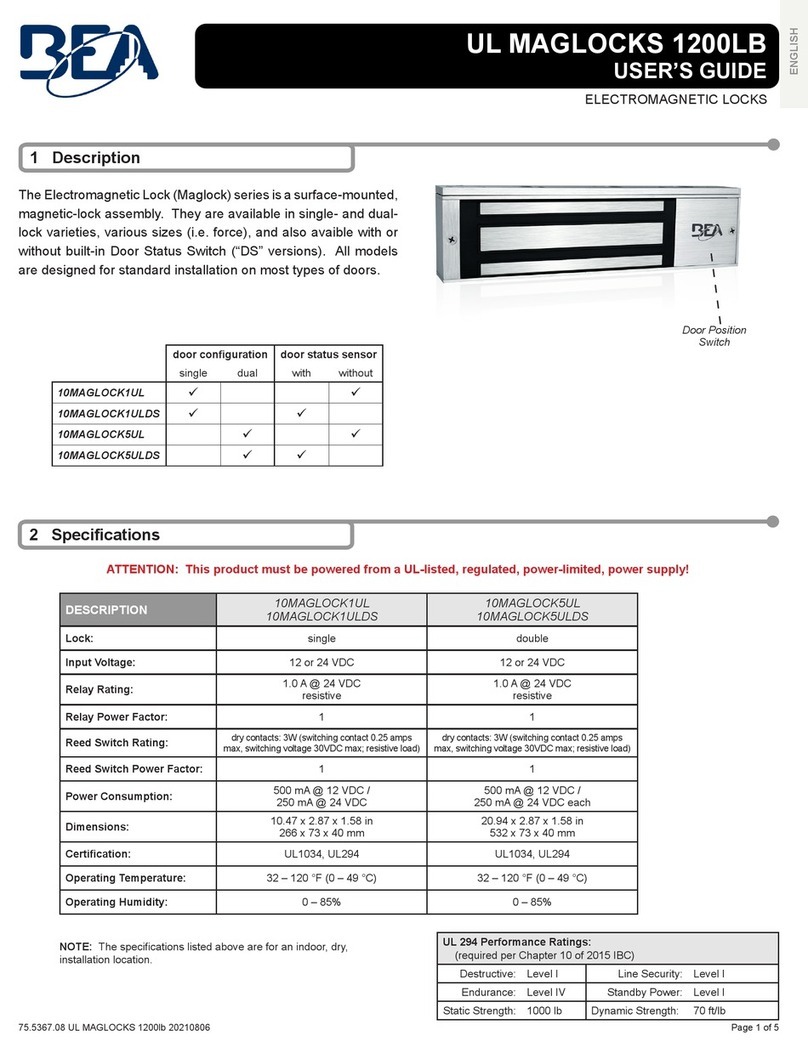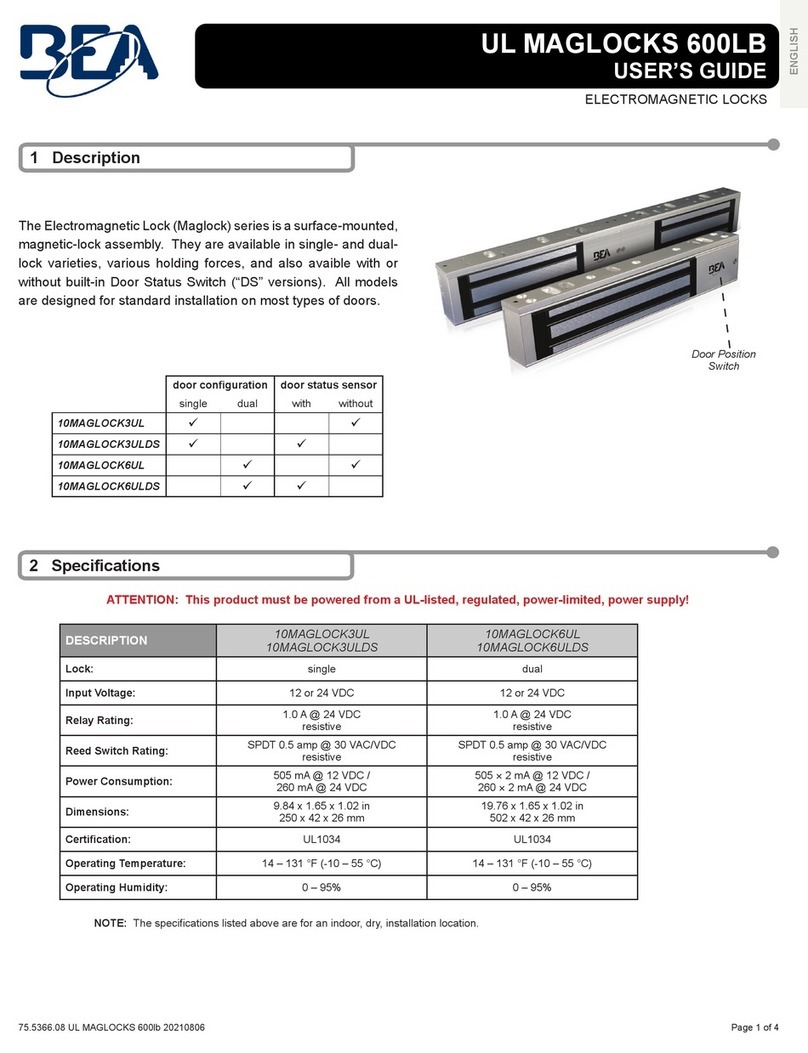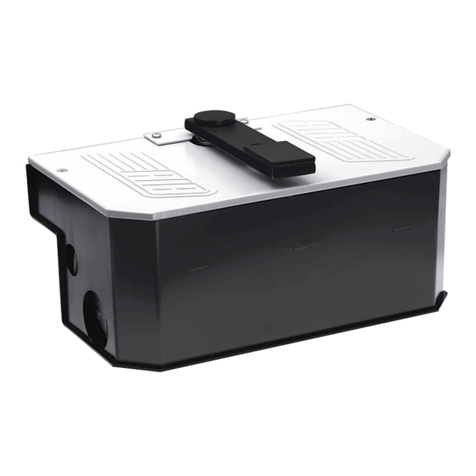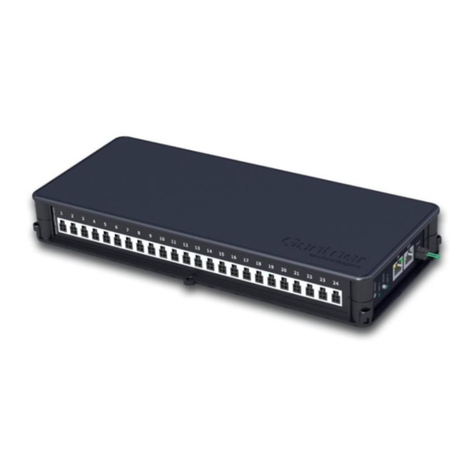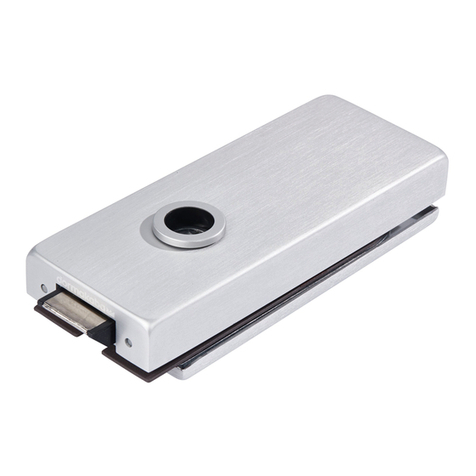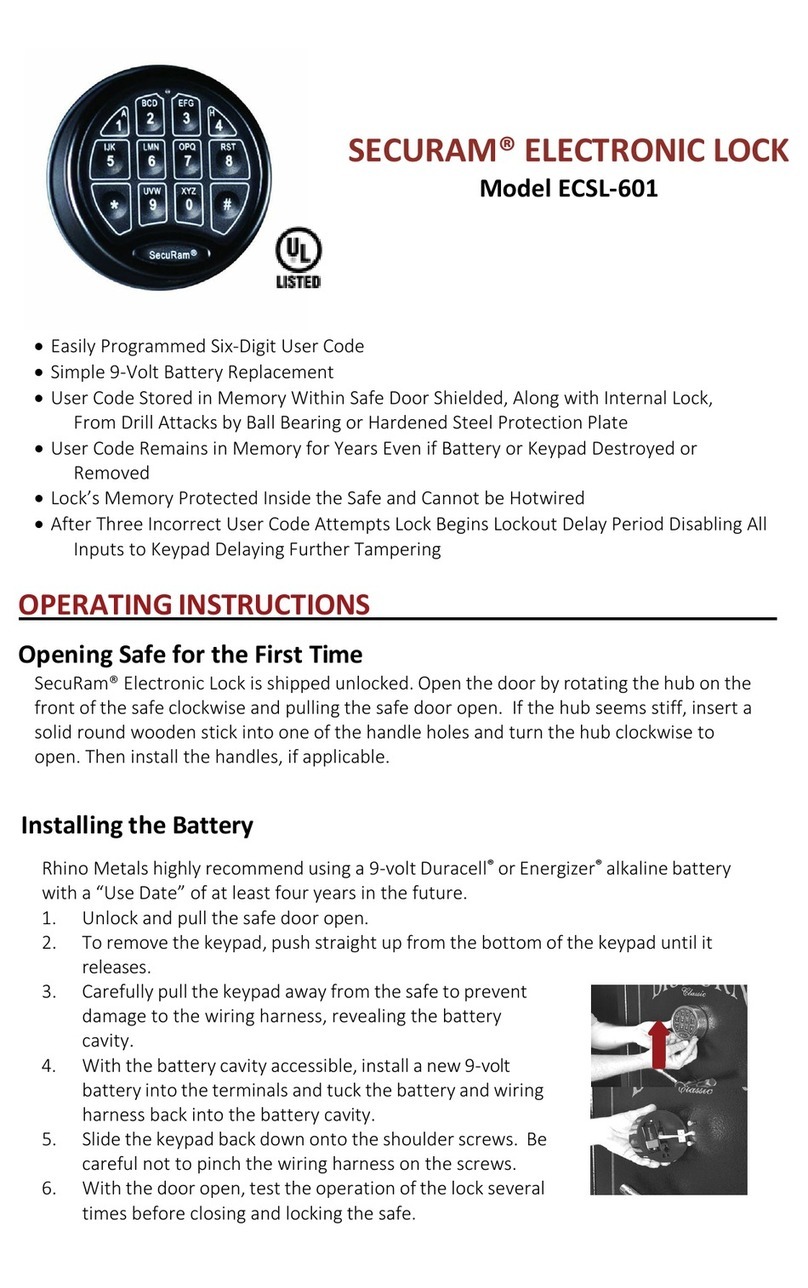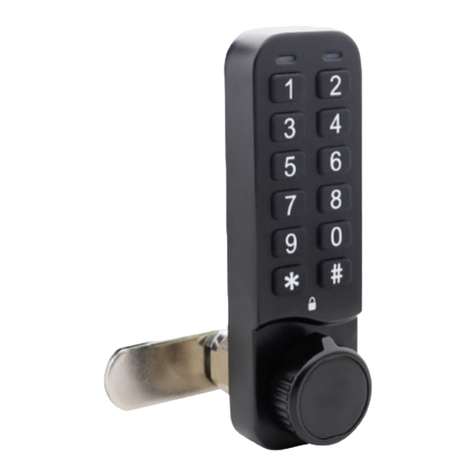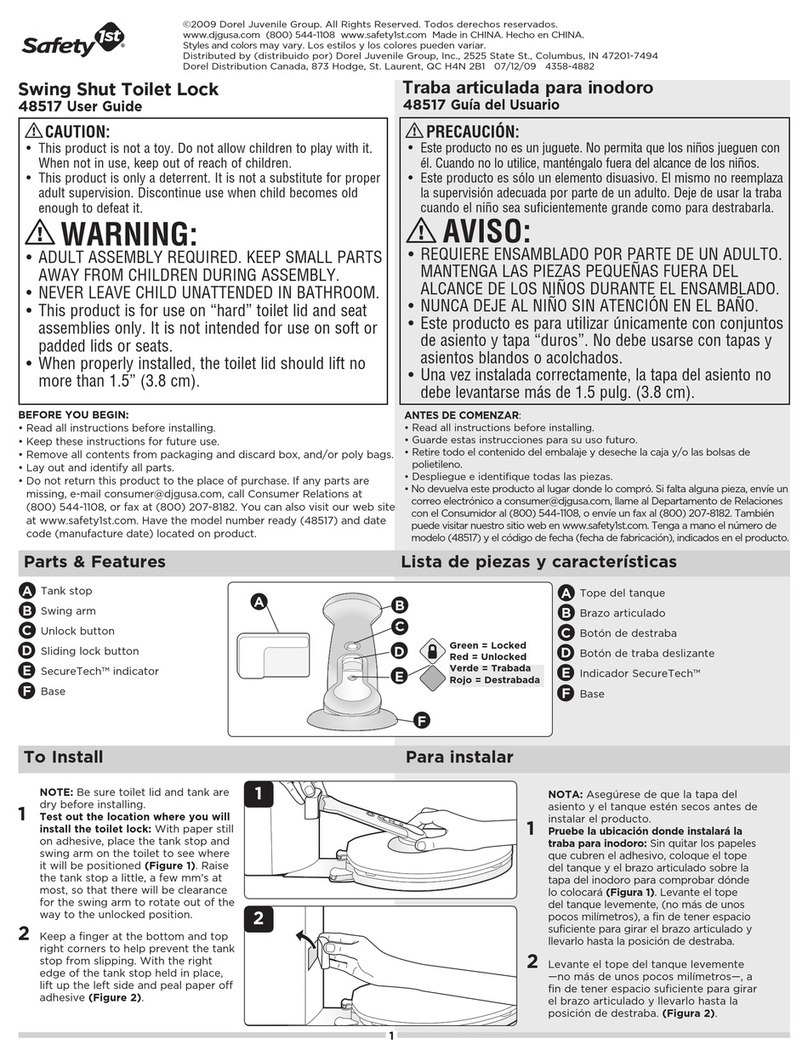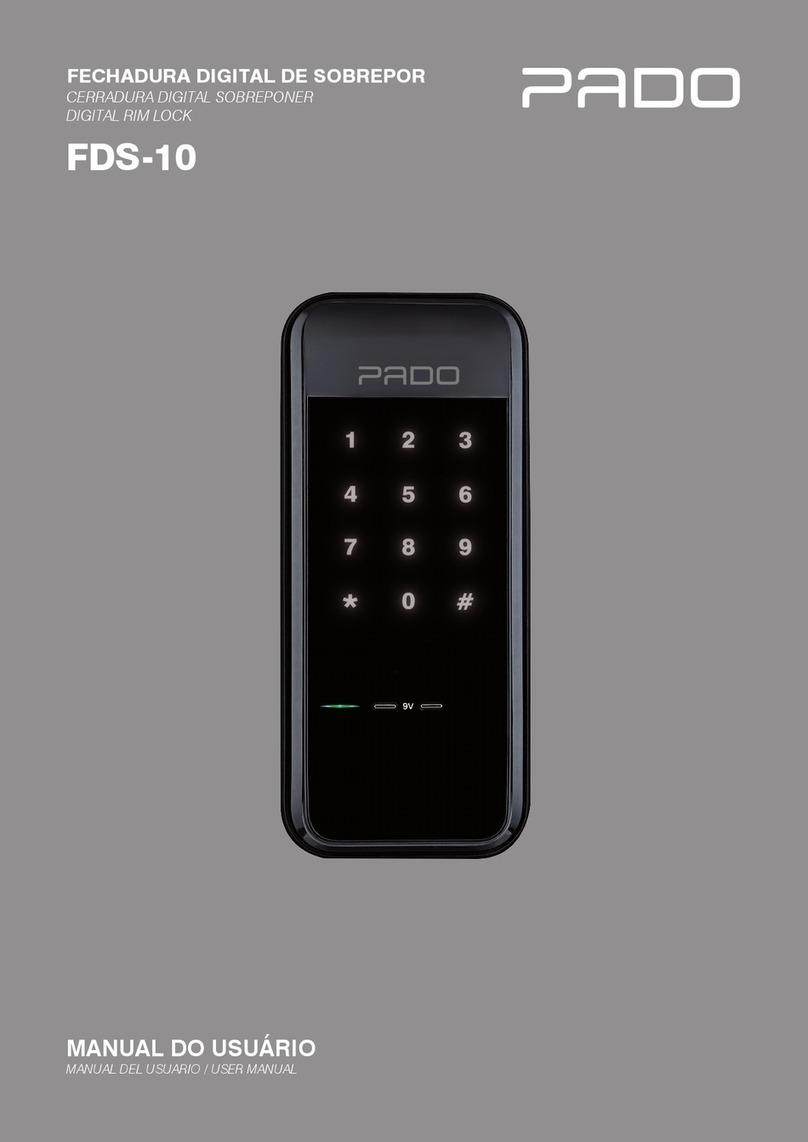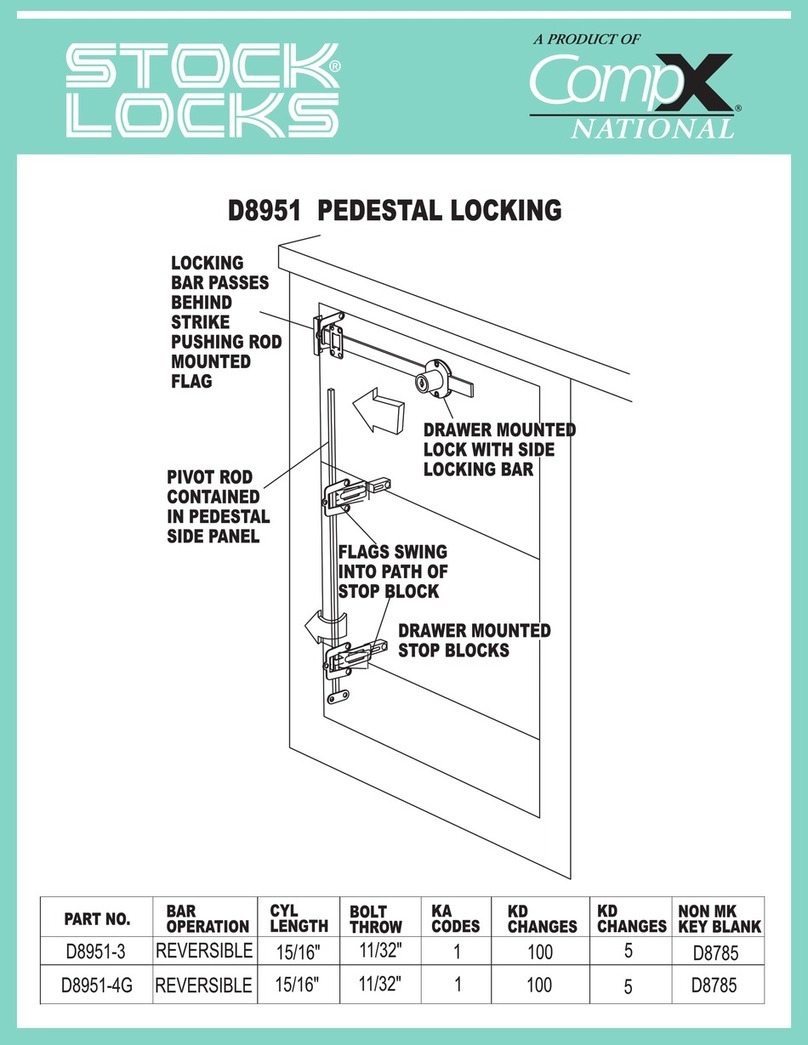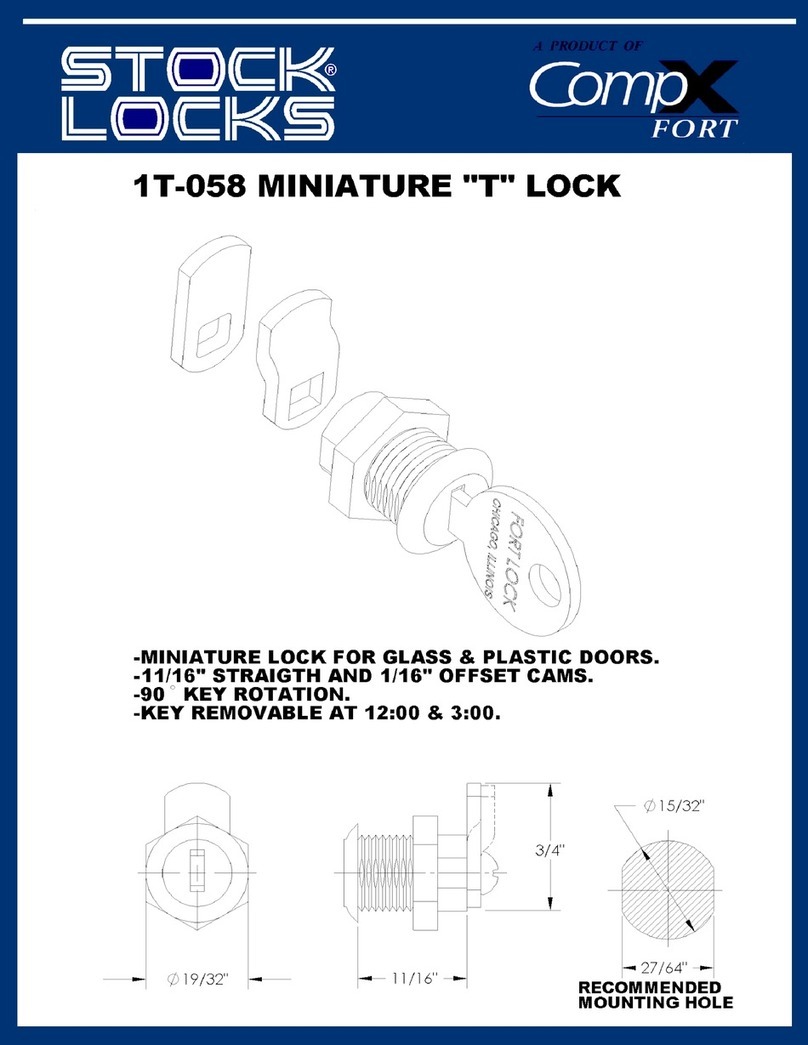Installation Instructions
Pre-Installation Instructions
1. This product must be installed according to all applicable
building and life safety codes. All installations must be
approved by the Authority Having Jurisdiction (AHJ).
2. Due to the variety of mounting configurations available with
this product, a survey and assessment of the physical area
in which the product will be installed must be performed.
3. The door frame must be inspected and deemed structurally
sound prior to installation of the electromagnetic lock. The
structural integrity of the mounting surfaces must be strong
enough to meet or exceed the holding force of the product.
4. The product must be protected from potential damage due
to intruders or tampering.
5. The product should be installed in a location that will not
hinder or create a potential safety hazard to authorized
personnel accessing the protected area.
6. Because electromagnetic locks are used in a variety of
applications and different door frame configurations, an
experienced installer with knowledge of this product must
make a determination of the optimal mounting method for
this specific application.
7. The components, hardware, installation instructions and
mounting template included with this product are intended
for use on outswinging doors.
8. Do not install this product on the exterior of buildings.
9. Do not use as a doorstop. This will void warranty.
10. Separate accessories not included with this product must be
used in the following applications:
• Narrow head jamb situations or center-hung doors
• Wherever there is insufficient space on the door frame
header to mount the lock
• Hollow metal or wood frames where the door stop is
not thick enough to allow the product to be installed
• Wherever an obstruction in the door prevents
installation of the armature plate at a proper height
• Doors that do not permit the armature plate to be
mounted low enough to meet the magnet surface
Refer to the Product Accessories Guide section of the
Installation Instructions for further information.
11. Installation of this product should be done by an
experienced installer with knowledge of this product.
12. A mechanical latching device is required in conjunction
with the Delayed Egress 10MAGDE1.
NOTE: It is highly recommended that thread locking compound
be applied to all screws during installation to reduce chance of
screws loosening over extended time.
PLEASE DELIVER ALL INSTALLATION INSTRUCTIONS TO
THE END-USER UPON COMPLETION OF THE INSTALLATION.
1. Mount the electromagnetic lock to the door frame as outlined
on the installation template included with the product.
Armature Plate Mounting Notes:
1) It is essential that this plate pivot slightly on the mounting bolt
to allow proper alignment with the magnet surface. If not aligned,
the lock may lose holding force or not lock at all.
2) The rubber washer on the head of the mounting bolt should
project slightly beyond the surface of the armature plate. It will
expand when power is removed and break the air vacuum
between the plate and magnet. If removed or trimmed, the lock
will appear to have some holding force even when power is
removed.
For added safety, thread locking compound has been provided for
the armature plate bolt and the four captive electromagnetic lock
mounting screws.
WARNING: Improper installation, maintenance, inspection or
usage of the product or any related accessories or parts may
cause the electromagnetic lock, armature plate and associated
hardware to disengage and fall, causing serious bodily injury
and property damage. BEA will not be liable to the installer,
purchaser, end user or anyone else for damage or injury to
person or property due to improper installation, care, storage,
handling, maintenance, inspection, abuse, misuse or act of
God or nature involving this product or any related accessories
or parts.
2. Route the power supply connecting wire through the door
frame and into the wire access hole in the top of the magnet
housing. Connecting wire should be of sufficient gauge for
the lock being installed and the distance being run. See table
for current draw specifications and wiring gauge chart.
3. See system overview and switching options.
Page 1 of 8

